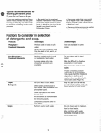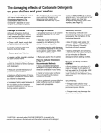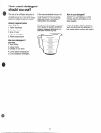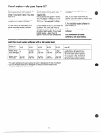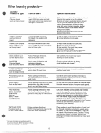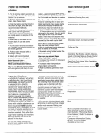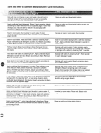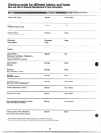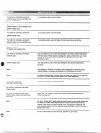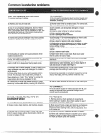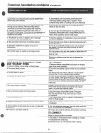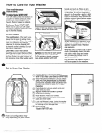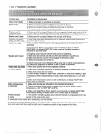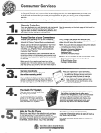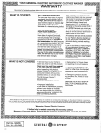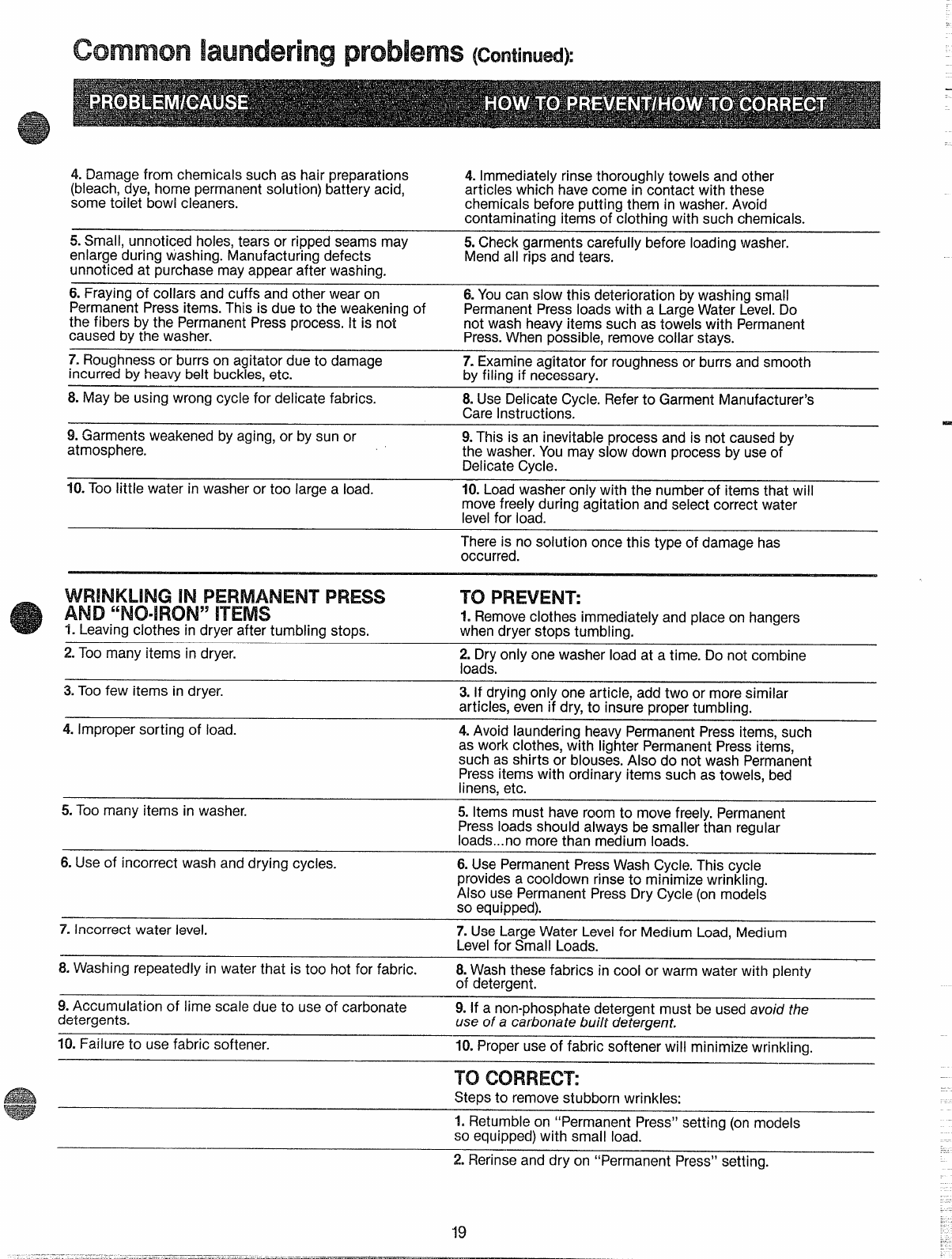
4. Damage from chemicals such as hair preparations
4. Immediately rinse thoroughly towels and other
(bleach, dye, home permanent solution) battery acid, articles which have come in contact with these
some toilet bowl cleaners.
chemicals before putting them in washer. Avoid
contaminating items of clothing with such chemicals.
5. Small, unnoticed holes, tears or ripped seams may
5. Check garments carefully before loading washer.
enlarge during washing. Manufacturing defects Mend all rips and tears.
unnoticed at purchase may appear after washing.
6. Fraying of collars and cuffs and other wear on
6. You can slow this deterioration by washing small
Permanent Press items. This is due to the weakening of
Permanent Press loads with a LargeWater Level.Do
the fibers by the Permanent Press process. It is not
not wash heavy items such as towels with Permanent
caused by the washer.
Press.When possible, remove collar stays.
7. Roughness or burrs on agitator due to damage
7. Examine agitator for roughness or burrs and smooth
incurred by heavy belt buckles, etc.
by filinq if necessary.
8. May be using wrong cycle for delicate fabrics.
8. Use Delicate Cycle. Referto Garment Manufacturer’s
Care Instructions.
9. Garments weakened by aging, or by sun or
9.This is an inevitable process and is not caused by
atmosphere.
the washer. You may slow down process by use of
Delicate Cycle.
f10.Too little water in washer or too large a load.
10.Load washer only with the number of items that will
move freely during agitation and select correct water
level for load.
There is no solution once this type of damage has
occurred.
WRINKLINGIN PERMANENT PRESS
AND “NO-IRON” ITEMS
TO FTuw3rE
1. Removeclothes immediately and place on hangers
fi. Leaving ciothes in dryer after tumbling stops.
when dryer stops tumbling,
2. Too many items in dryer.
2. Dry only one washer load at a time. Do not combine
loads.
3,Too few items in dryer.
3. If drying only one article, add two or more similar
articles, even if dry, to insure proper tumbling.
4. Improper sorting of load.
4. Avoid laundering heavy Permanent Press items, such
as work clothes, with lighter Permanent Press items,
such as shirts or blouses. Also do not wash Permanent
Press items with ordinary items such as towels, bed
linens, etc.
5. Too many items in washer.
5. Items must have room to move freely. Permanent
Press loads should always be smaller than regular
Ioads...no more than medium loads.
& Use of incorrect wash and drying cycles.
6. Use Permanent Press Wash Cycle. This cycle
provides a cooldown rinse to minimize wrinkling.
Also use Permanent Press Dry Cycle (on models
so equipped).
7’.Incorrect water level.
7. Use Large Water Level for Medium Load, Medium
Level for Small Loads.
8. Washing repeatedly in water that is too hot for fabric.
8. Wash these fabrics in cool or warm water with plenty
of detergent.
9. Accumulation of lime scale due to use of carbonate
9. If a non-phosphate detergent must be used avok.ithe
detergents.
use of a carbonate built detergent.
?0. Failure to use fabric softener.
10. Proper use of fabric softener will minimize wrinkling.
TOcoRREcfi
Steps to remove stubborn wrinkles:
1. Retumble on “Permanent Press” setting (on models
so equipped) with small load.
2. Rerinse and dry on “Permanent Press” setting.



